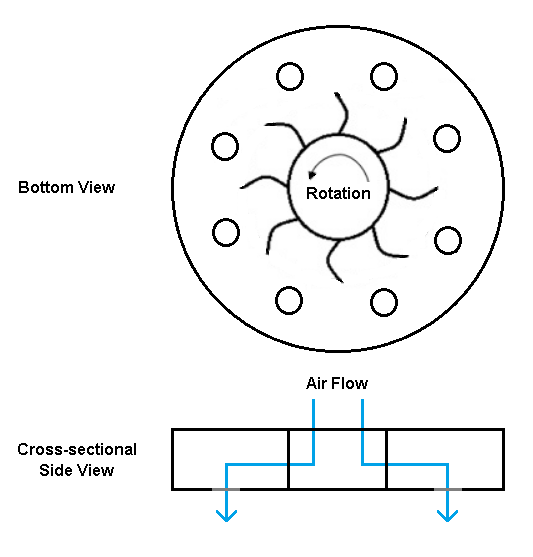I am considering using a 3D printer to make unconventional impellers for a custom-made drone that I am planning to build. I am concerned that these plastic impellers may explode if their motors' RPMs get too high.
Please see the drawing below.
This drawing is showing two views of an enclosed centrifugal blower impeller with forward curved blades and the bottom plate of the impeller has holes in it. I am thinking that the high static air pressure that will be created within the impeller will generate a good amount of lift for the drone.
This design was inspired after I watched a Youtube video about a drone that uses cross-flow fans for lift:
My concern is that if the motor's RPM gets too high, the static air pressure inside the enclosed impeller will get too high and the impeller will explode, sending plastic shrapnel in all directions.
Because of this explosion risk, would it be advisable that I not use this potentially dangerous impeller?
EDIT
I just want to point out that the blades will be embedded within the enclosed impeller and that the whole impeller is rotated by a motor. The blades will not be part of a separate squirrel cage that will spin within a stationary enclosure that has holes in the bottom of it.


